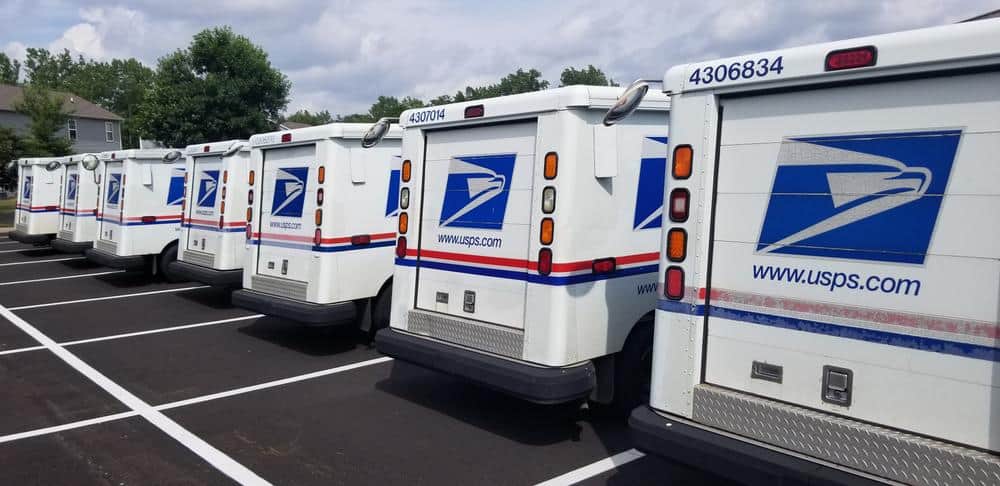
Understanding your pay stub is crucial in managing your finances and planning for your retirement. If you’re a United States Postal Service (USPS) employee, you might have noticed a line item on your pay stub labeled “USPS Retirement.” But what does this mean? Let’s delve into the details.
“USPS Retirement” on a pay stub refers to the amount deducted from a United States Postal Service (USPS) employee’s salary for their retirement account during a specific pay period and the year-to-date total. This is part of the federal retirement program, which provides a defined benefit (pension) and disability coverage for USPS employees. The specifics of the retirement contributions depend on whether the employee is part of the Civil Service Retirement System (CSRS) or the Federal Employee Retirement System (FERS).
Decoding USPS Retirement on Pay Stub
USPS retirement on a pay stub refers to the amount deducted from an employee’s salary for their retirement account during a specific pay period and the year-to-date total. The USPS participates in the federal retirement program, which provides a defined benefit (pension) and disability coverage for its employees.
USPS Retirement System
Most postal employees are eligible to participate in one of two federal retirement benefit programs: the Civil Service Retirement System (CSRS) for workers hired before 1984, and the Federal Employee Retirement System (FERS) for workers hired after 1984. The retirement benefits are administered by the U.S. Office of Personnel Management (OPM) .
Calculating USPS Retirement Contributions
For FERS employees, the USPS automatically contributes an amount equal to 1% of the employee’s basic pay each pay period. Additionally, the USPS matches employee contributions dollar for dollar for the first 3% of basic pay contributed, and the next 2% of basic pay contributed is matched at 50 cents on the dollar.
For CSRS employees, a percentage of basic salary is deducted and withheld as the employee’s contribution to the retirement fund. The percentage of basic pay withheld changes based on the year.
Comparing USPS Retirement Contributions
When comparing USPS retirement contributions to private-sector retirement plans, USPS retirement benefits are comparable in many ways to those offered in the private sector, but some differences exist.
Benefits of USPS Retirement for Employees
USPS employees enjoy several retirement benefits as part of their compensation package. These benefits include a pension, health benefits, dental and vision insurance, Thrift Savings Plan (TSP), and Social Security benefits.
Interpreting USPS Retirement Deductions on Pay Stub
To interpret the USPS retirement deductions on a pay stub, you should look for the “RETIRE” section. This section shows the amount deducted towards your retirement account for the pay period and the year-to-date.
Financial Implications of USPS Retirement
USPS retirement can have significant implications on an employee’s future financial planning. It is crucial for employees to understand their retirement benefits, health benefits, and savings options, as well as their eligibility for retirement.
USPS Retirement for Part-Time, Full-Time, and Seasonal Employees
USPS retirement benefits differ for part-time, full-time, and seasonal employees in various ways. Full-time and part-time career employees are eligible for retirement benefits, but the calculation of annuity for employees with part-time service is different. Seasonal employees have limited retirement benefits.
Common Misconceptions About USPS Retirement on Pay Stubs
Some common misconceptions about USPS retirement on pay stubs include pre-funding pensions, funding pensions for 75 years, retiree health benefits, and annuity payments.
Applying for USPS Retirement
To apply for USPS retirement, you need to complete and submit the SF 3107 form. You can also initiate and schedule a retirement counseling session by calling the USPS Human Resources Shared Services (HRSSC).
In conclusion, understanding USPS retirement on a pay stub is crucial for managing your finances and planning for your retirement. It’s important to understand the deductions and contributions, as well as the benefits of USPS retirement. With the right planning and understanding, you can ensure a secure financial future after retirement.
Remember, it’s never too early to start planning for your retirement. If you have any questions or concerns, don’t hesitate to reach out to your HR department or a financial advisor.
Frequently Asked Questions
What is the Thrift Savings Plan (TSP)?
The Thrift Savings Plan (TSP) is a federal government-sponsored retirement savings and investment plan. It’s similar to the 401(k) retirement plans offered by many private-sector employers. USPS employees can contribute to the TSP, and these contributions are matched by the USPS up to a certain percentage.
How does the USPS match contributions for FERS employees?
For FERS employees, the USPS matches employee contributions dollar for dollar for the first 3% of basic pay contributed, and the next 2% of basic pay contributed is matched at 50 cents on the dollar.
How is the retirement contribution for CSRS employees calculated?
For CSRS employees, a percentage of basic salary is deducted and withheld as the employee’s contribution to the retirement fund. This percentage changes based on the year.
Is there a difference in retirement benefits for full-time and part-time USPS employees?
Yes, there is a difference. Both full-time and part-time career employees are eligible for retirement benefits, but the calculation of annuity for employees with part-time service is different.
How can I apply for USPS retirement?
To apply for USPS retirement, you need to complete and submit the SF 3107 form. You can also initiate and schedule a retirement counseling session by calling the USPS Human Resources Shared Services (HRSSC).












